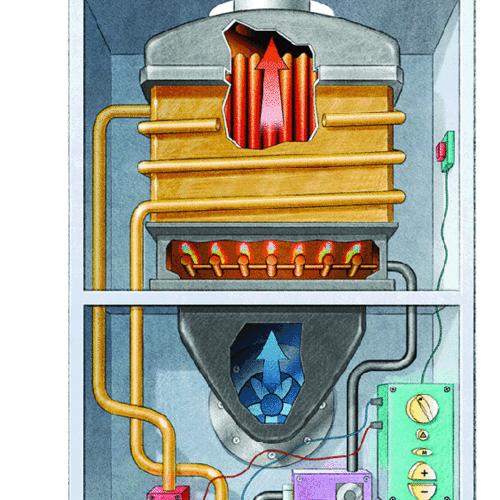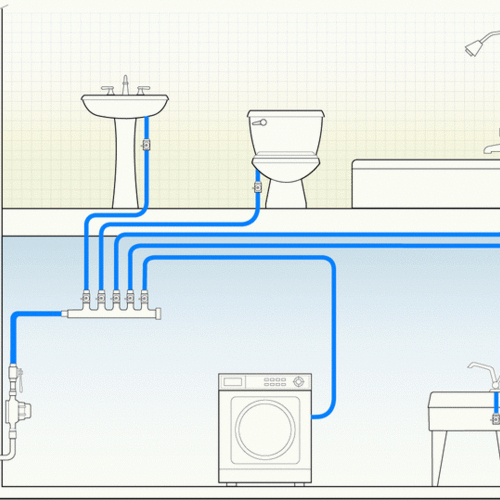DRAIN-WATER HEAT RECOVERY
Simple systems have speedy payback
The energy department estimates that energy losses in hot water amount to 80% to 90%, a good argument for installing a drain-water heat-recovery (DHR) system.
In a gravity-film heat exchanger (GFX), drain water flows through a copper pipe that is wrapped in smaller diameter copper tubing. Heat from the drain water is transferred to incoming water. Heat exchangers are made from solid copper so they are durable, and there are no moving parts to wear out.
Exchangers without storage. In the simplest type of system, the heat exchanger preheats cold water coming into the house. This arrangement does not include a way of storing the recovered energy so it’s only really effective when hot water is being drawn and drained at the same time — as it would be during a shower, for example.
The most efficient systems are balanced, which means all of the incoming water is piped through the heat exchanger. In one study reported by the energy department, electricity savings were between 800 kWh and 2300 kWh per year. Payback for the $500 investment was in as little as two years. (With recent increases in copper prices, a drain-water heat-recovery device is more likely to cost $800 or $1000 these days.)
Systems with storage tanks. The main disadvantage of non-storage systems is that they won’t recovery energy lost in bathwater or water drained from a washing machine or dishwasher because there’s no incoming water moving through the heat exchanger.
The alternative is expensive: a heat-recovery system with a storage tank. One heat exchanger inside the tank captures heat from the drain water while a second heat exchanger for incoming cold water picks it up.
FURTHER RESOURCES
Manufacturers of drainwater heat recovery devices include:

This article is only available to GBA Prime Members
Sign up for a free trial and get instant access to this article as well as GBA’s complete library of premium articles and construction details.
Start Free TrialAlready a member? Log in










5 Comments
Install Considerations / Details
You have to consider the install details before buying a GFX. Vertical orientation is critical for the film to form on the drain pipe walls and the longer models are more efficient than the shorter models. So you have to locate the tallest vertical drop from the main drain line to the sewer / septic pipe exit for the best efficiency.
How close to your heater for best efficiency?
I love the idea of the DWHR pipes - simple and effective. My trouble is that with a slab-on-grade build - where you cannot easily go through a floor joist to connect directly - you would end up running a lot of tubing in an less-than-direct fashion. I figure with my configuration, the DWHR outlet would be 18 - 20 feet from my on-demand water heater. Would my newly heated water cool down over that length of run, thereby deminishing the effiency? This would be a big concern given the capital cost.
Any thoughts?
John, near Ottawa
http://yearofthehouse.wordpress.com/
Response to John Scime
John,
Here is one set-up sometimes used for slab-on-grade homes:
http://gfxtechnology.com/slabfloor.html
I'm not necessarily advocating this approach -- it lacks the no-moving-parts efficiency of an installation that depends on gravity -- but you could do it if you want.
EcoDrain?
Anyone with experience using https://ecodrain.com/en/? Seems to be less expensive than the copper alternatives.
I'm looking at using this with a heat pump water heater in a new SF home.
Response to Adam Wride
Adam,
Here is a link to Marc Rosenbaum's review of the EcoDrain (published on GBA): Drainwater Heat Recovery Comes of Age.
Log in or become a member to post a comment.
Sign up Log in